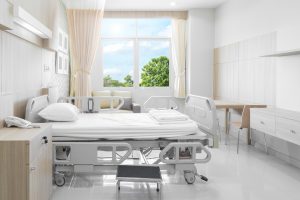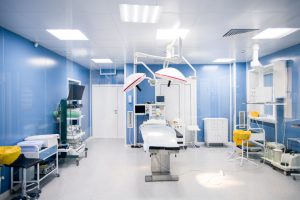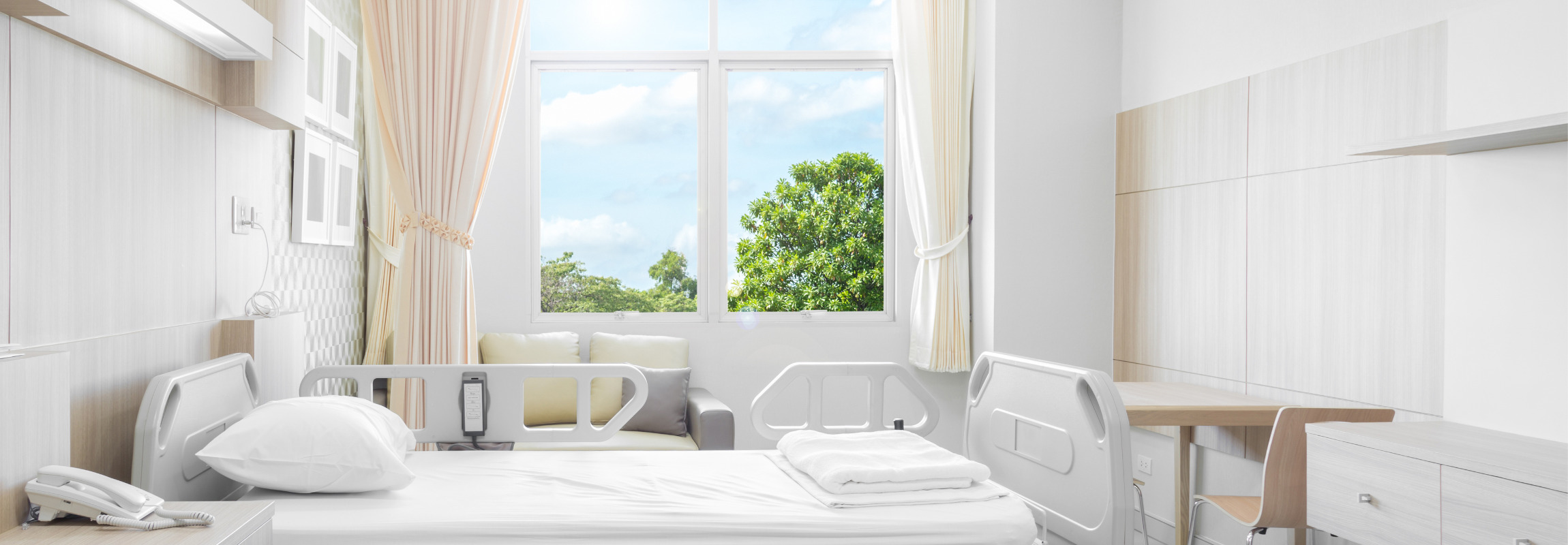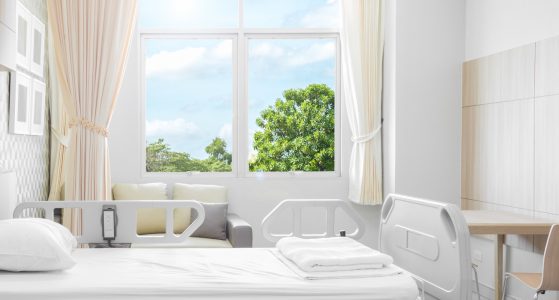 Most of us know that UV light can kill viruses and bacteria with germicidal properties, but do you know how it works and the many benefits of hospital UV light disinfection? Ultraviolet (UV) light is electromagnetic radiation emitted in various wavelengths, either UVA, UVB, or UVC, with short-wave UVC having the most powerful, germ-killing properties. UVC light emitted at 254 nanometers (nm) is proven to destroy harmful pathogens and microorganisms with high efficacy.
Most of us know that UV light can kill viruses and bacteria with germicidal properties, but do you know how it works and the many benefits of hospital UV light disinfection? Ultraviolet (UV) light is electromagnetic radiation emitted in various wavelengths, either UVA, UVB, or UVC, with short-wave UVC having the most powerful, germ-killing properties. UVC light emitted at 254 nanometers (nm) is proven to destroy harmful pathogens and microorganisms with high efficacy.
Disinfection in hospitals has always been of great concern, although recent events with hospitals across the country reaching near capacity make cleanliness and disinfection even more important. Hospital-acquired infections (HAIs) are infections that occur within 48 hours of hospital admission, within three days after discharge, or up to 30 days following an operation. The Centers for Disease Control, CDC, estimates that 1 in 31 patients in U.S. hospitals contract an HAI, many caused by serious antibiotic-resistant bacteria that may lead to sepsis or death.
Challenges of Disinfecting Hospitals
Hospitals provide life-saving miracles every day; they are also a place where numerous contagious viruses and bacteria could be lurking in patient rooms, waiting rooms and hallways. Manual cleaning in hospitals is often not enough to eliminate harmful pathogens with acceptable effectiveness. Decontamination of patient rooms prior to subsequent admissions is critical for many reasons:
- The patient who left the room could have had a serious, contagious infection
- The patient entering the room is already ill and may have a compromised immune system
- Hospital staff move from room to room and have the potential to transmit pathogens
Many factors play a role in the effectiveness of manual cleanings, such as the human factor. Some reasons why manual cleaning does not provide enou gh protection include:
gh protection include:
- Human error, a person can simply ‘miss a spot’ when cleaning
- Insufficient contact times with cleaners
- Diluted disinfectant solutions
- Use of contaminated cleaning cloths spreading disease
- Outsourced cleaning staff has proven less effective than hospital personnel
According to a report by the National Institutes of Health, Evaluation of an Ultraviolet C (UVC) Light-Emitting Device for Disinfection of High Touch Surfaces in Hospital Critical Areas, many studies demonstrate that current cleaning strategies in hospital rooms are inadequate, and 50% or more of hospital surfaces may go untouched and uncleaned after manual disinfection. Manual cleaning is plagued with random variations, such as the improper use of cleaning cloths and solutions that can spread harmful pathogens.
How Does UVC Light Disinfect?
UVC light is replicated in UVC germicidal lamps, designed and engineered to emit the precise wavelength necessary for disinfection. UV lamp manufacturers like LightSources are expert UV lamp manufacturers in designing UV lamps to obtain the perfect germicidal emissions necessary. Ozone producing lamps emit UV electromagnetic radiation at 185 nm and are effective in certain water and air applications and also eliminate foul odor and volatile organic compounds (VOCs) from the air.
UVC radiation quickly penetrates the DNA of harmful bacteria and virus cells and alters the DNA so they no longer are capable of replicating. A virus cell that cannot replicate is considered dead and harmless. UVC light is proven to eliminate a wide range of viruses and bacteria, including superbugs like MERS, SARS, vancomycin-resistant Enterococcus (VRE), C. Difficile, and many others.
 Where Can Hospitals Use UV Light?
Where Can Hospitals Use UV Light?
UVC germicidal lamps are used in a wide range of germicidal systems, such as UV air purification systems, UV water treatment systems, and surface disinfection applications. UV light in hospitals can be used in many systems to disinfect:
- Air – UV air treatment systems include HVAC UV air purification systems where UV lamps purify the air as it passes through the central ventilation system. Air disinfection is also possible from upper room ultraviolet germicidal irradiation, UVGI, systems.
- Water – UV water treatment systems eliminate harmful microorganisms in water supplies.
- Surfaces – UV disinfection lamps can be used over countertops in patient rooms and over surgical tables in operating rooms. UVC robots can roam through patient rooms, operating rooms, hallways, and bathrooms to disinfect all surfaces and even hard-to-reach places.
- Food – food irradiation is another way that hospitals can prevent the spread of disease by preventing foodborne illnesses such as E. coli and Salmonella. UV light disinfection systems provide many benefits in restaurants and cafeterias and could be especially useful in hospital kitchens and eating areas.
There are numerous ways that hospitals and many other public places can help prevent the spread of harmful diseases by utilizing germicidal UV lamps. UV light disinfection systems can be found in airports, libraries, schools, retail, commercial, industrial, restaurants, cafeterias, and many other establishments.
Benefits of Hospital UV Light Disinfection Systems
Hospitals aimed at improving infection control strategies can realize significant benefits by utilizing UV light disinfection systems in addition to their current cleaning practices. UV light provides many benefits in hospitals, such as:
- Disinfects 24/7, without paying for additional cleaning labor
- Helps hospitals to maintain a clean and safe environment without putting added strain on hospital staff
- UV surface disinfection systems provide high efficacy in killing many harmful pathogens, including antibiotic-resistant strains
- Provides a safer environment to protect patients against hospital-acquired infections (HAIs)
UV disinfection systems require high-quality UVC germicidal lamps designed for their specific application.
LAMP PRODUCT DATA:
UV Germicidal LampsLAMP Applications:
UV Germicidal ApplicationsLightSources and LightTech are global industry leaders in UV lamp manufacturing, providing a wide range of UVC germicidal lamps for any disinfection application. Our lighting engineers possess deep technical knowledge of UV radiation, engineering custom designed lamp features to meet your specifications with custom phosphor blends available. Contact us with any questions and to find the perfect UV lamps for your hospital UV light disinfection system.
This post is also available in:
 Chino simplificado
Chino simplificado Inglés
 Alemán
Alemán


